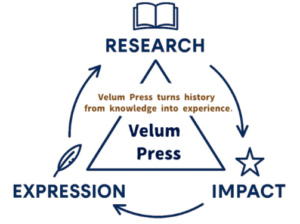Velum Press

Velum Press is an editorial project dedicated to the history of European royal dynasties and their cultural legacies. The name “Velum” comes from the Latin word for “parchment,” a tribute to the medium on which history was recorded for centuries.
About Habsburg Dynasty.com
Habsburg Dynasty.com is a history platform that reintroduces the story of the Habsburgs—who reigned over Europe for more than 650 years—through reliable primary sources and scholarly research. Our goal is to present history not only as knowledge, but as an experience that resonates with modern readers.
The Velum Press editorial team works with three guiding principles:
- Research: Carefully analyzing archival materials to build a foundation of evidence.
- Expression: Bringing history to life with narrative writing, diagrams, and visuals.
-
Resonance: Asking what history means today and ensuring it speaks to contemporary audiences.
We aim to go beyond timelines and dates, offering readers glimpses of queens’ voices, the tension of battlefields, and the rhythms of daily court life—so that history can be felt here and now.
Editorial Team

Lead Writer & Editor-in-Chief (Velum Press)
With professional experience in translation and interpretation across multilingual and multicultural settings, the editor-in-chief brings a unique ability to “read history from multiple perspectives.” Responsible for the overall planning, structure, and editorial direction of this site, their work focuses on the genealogy and cultural legacy of the Habsburg dynasty. While grounded in historical sources, the approach also emphasizes narrative and emotional resonance, seeking to reframe the very way history is told.
Historical Translation & Archival Research (Velum Press)
Our translation team specializes in examining early modern archives across European digital libraries and manuscript collections. We emphasize contextual accuracy—terminology, institutions, and historical background—while balancing faithfulness to the original source with readability for today’s audience. This ensures that historical documents retain their weight as sources while remaining accessible to modern readers.
Selected References & Source Materials
- Hiroshi Emura, The Habsburgs (in Japanese)
- Yasushi Aoki, Complete History of the Habsburgs (in Japanese)
- Bennet Richter, Juana the Mad
- Archivo General de Simancas (Spanish Royal Archives, PARES)
- Österreichische Nationalbibliothek (Austrian National Library, Digital Collections)
- Academic studies in genealogy, medical history, and political history (various international journals)
-
Additional references are listed at the end of each article.
Contact
[Contact Form]
We welcome feedback, questions, and comments about our articles. If you notice any discrepancies with historical facts, we would be grateful if you could share references or primary sources so that we may review and update accordingly.


